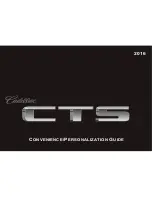
2
OPERATION
The TLV-9000
™
lift axle valve is a 5/2 way (5 ports and
2 flow positions) electro-pneumatic valve that directionally
controls the raising and lowering of the lift axle via an
electronic signal from the Bendix
®
trailer ABS/TRSP
(Antilock Braking System / Trailer Roll Stability Program)
Electronic Control Unit (ECU) based on pressure sensing.
The valve allows the lift axle to be raised and lowered via
a 12 VDC command using a standard wiring harness to
either exhaust the suspension bags and fill the lift bags or
exhaust the lift bags and fill the suspension bags.
The valve, while in a non-voltage applied state, delivers
supply pressure to the suspension bags only, providing a
ground position for the lift axle. When the lift axle is in the
down position, an internal piston prevents pressure from
being applied to the lift bags with its circuit open to exhaust.
Refer to Figures 2 and 5.
In the applied voltage state, the valve’s solenoid opens and
allows air pressure to compress the internal piston spring
changing the operation of the valve. During this function,
the piston redirects the pressure from the suspension bags
and now delivers pressure to the lift bags. The suspension
bag circuit opens to exhaust and the lift axle is now in the
raised position.
Refer to Figures 3 and 6.
GENERAL SAFETY GUIDELINES
WARNING! PLEASE READ AND
FOLLOW THESE INSTRUCTIONS
TO AVOID PERSONAL INJURY OR DEATH:
When working on or around a vehicle, the following
guidelines should be observed AT ALL TIMES:
▲
Park the vehicle on a level surface, apply the parking
brakes and always block the wheels. Always wear personal
protection equipment.
▲
Stop the engine and remove the ignition key when working
under or around the vehicle. When working in the engine
compartment, the engine should be shut off and the ignition
key should be removed. Where circumstances require that
the engine be in operation, EXTREME CAUTION should be
used to prevent personal injury resulting from contact with
moving, rotating, leaking, heated or electrically-charged
components.
▲
Do not attempt to install, remove, disassemble or
assemble a component until you have read, and thoroughly
understand, the recommended procedures. Use only the
proper tools and observe all precautions pertaining to use
of those tools.
▲
If the work is being performed on the vehicle’s air brake
system, or any auxiliary pressurized air systems, make
certain to drain the air pressure from all reservoirs before
beginning ANY work on the vehicle. If the vehicle is
equipped with a Bendix
®
AD-IS
®
air dryer system, a Bendix
®
DRM
™
dryer reservoir module, or a Bendix
®
AD-9si
®
air
dryer, be sure to drain the purge reservoir.
▲
Following the vehicle manufacturer’s recommended
procedures, deactivate the electrical system in a manner
that safely removes all electrical power from the vehicle.
▲
Never exceed manufacturer’s recommended pressures.
▲
Never connect or disconnect a hose or line containing
pressure; it may whip and/or cause hazardous airborne
dust and dirt particles. Wear eye protection. Slowly open
connections with care, and verify that no pressure is
present. Never remove a component or plug unless you are
certain all system pressure has been depleted.
▲
Use only genuine Bendix
®
brand replacement parts,
components and kits. Replacement hardware, tubing, hose,
fi ttings, wiring, etc. must be of equivalent size, type and
strength as original equipment and be designed specifi cally
for such applications and systems.
▲
Components with stripped threads or damaged parts should
be replaced rather than repaired. Do not attempt repairs
requiring machining or welding unless specifi cally stated
and approved by the vehicle and component manufacturer.
▲
Prior to returning the vehicle to service, make certain all
components and systems are restored to their proper
operating condition.
▲
For vehicles with Automatic Traction Control (ATC), the ATC
function must be disabled (ATC indicator lamp should be
ON) prior to performing any vehicle maintenance where
one or more wheels on a drive axle are lifted off the ground
and moving.
▲
The power MUST be temporarily disconnected from the
radar sensor whenever any tests USING A DYNAMOMETER
are conducted on a vehicle equipped with a Bendix
®
Wingman
®
system.
▲
You should consult the vehicle manufacturer's operating
and service manuals, and any related literature, in
conjunction with the Guidelines above.
Figure 3 – Lift Bag Delivery Position (Lift Axle in Raised
State)
Power ON
(Solenoid is Energized)
4
1
3
11
21
23
4
1
3
11
21
23
Figure 2 – Suspension Delivery Position (Lift Axle Down
and in Normal State)
Power OFF
(Solenoid is in Ground State)


























